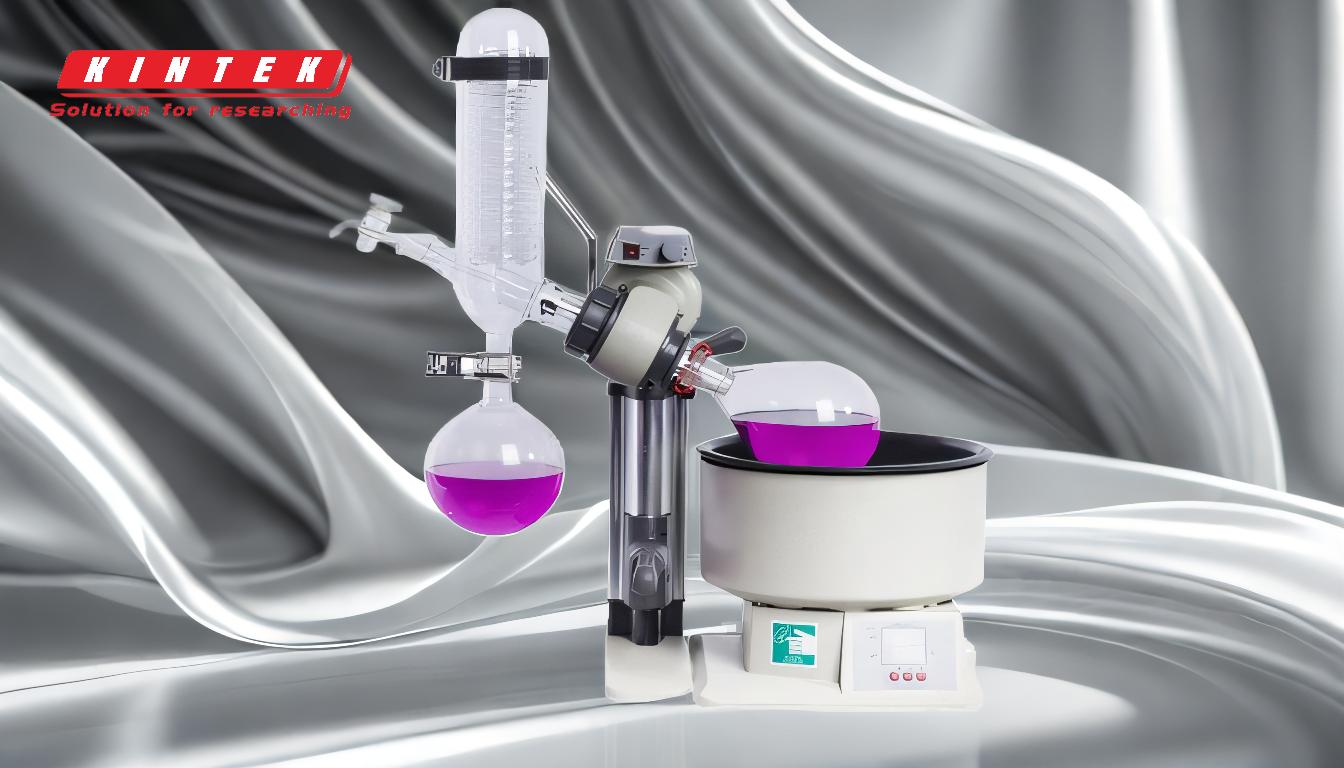A rotary evaporator is a versatile and essential tool in laboratories and industries, primarily used for the efficient and gentle removal of solvents from samples through evaporation. It is particularly valuable in extraction processes due to its ability to operate at lower temperatures, preventing the degradation of heat-sensitive compounds. The rotary evaporator's design, which utilizes frictional and centrifugal forces, ensures a continuous and automated process, increasing the surface area of evaporation and reducing bumping. This makes it highly efficient for plant extraction and other applications in biological, pharmaceutical, chemical, and food-making industries. Additionally, the ability to reuse solvents multiple times enhances its cost-effectiveness and reduces labor intensity compared to traditional methods like maceration.
Key Points Explained:

-
Efficient Solvent Removal:
- The primary function of a rotary evaporator is to remove solvents from samples through evaporation. This is achieved by creating a vacuum, which lowers the boiling point of the solvent, allowing it to evaporate at lower temperatures. This is particularly beneficial for heat-sensitive compounds that might degrade at higher temperatures.
-
Lower Temperature Operation:
- One of the significant advantages of using a rotary evaporator is its ability to operate at lower temperatures. This is crucial for preserving the integrity of heat-sensitive compounds during the extraction process. Traditional methods like maceration often require higher temperatures, which can lead to the degradation of valuable compounds.
-
Continuous and Automated Process:
- The rotary evaporator offers a continuous and automated process, which is more efficient and less labor-intensive compared to manual methods. The automation reduces the need for constant supervision and manual intervention, making it a preferred choice in high-throughput laboratories and industrial settings.
-
Increased Surface Area for Evaporation:
- The design of the rotary evaporator includes a rotating flask that creates a thin film of the extract along the flask's walls. This increases the surface area for evaporation, enhancing the efficiency of the process. The frictional and centrifugal forces generated by the rotation help in spreading the extract uniformly, ensuring consistent evaporation.
-
Reduction of Bumping:
- Bumping, the sudden and violent boiling of solvents, can cause mechanical damage to the equipment and lead to sample loss. The rotary evaporator mitigates this issue by adjusting the vacuum and using the rotating motion to create a smooth evaporation process. This results in higher yields and better-quality extracts.
-
Versatility Across Industries:
- The rotary evaporator is widely used in various fields, including biological, pharmaceutical, chemical, and food-making industries. Its versatility makes it suitable for small-scale experiments, pilot production, and large-scale industrial applications. It is particularly useful for the continuous distillation of large amounts of volatile solvents.
-
Solvent Reusability:
- Another significant advantage is the ability to reuse the solvent multiple times. This not only makes the process more cost-effective but also environmentally friendly by reducing solvent waste. The efficient recovery and reuse of solvents are crucial in industries where solvent costs and disposal are significant concerns.
-
Precision and Control:
- Rotary evaporators are equipped with precise engineering features, including vacuum and pressure control, which allow for fine-tuning of the evaporation process. This precision ensures that the extraction process is gentle and efficient, preserving the quality of the extracted compounds.
In summary, the rotary evaporator is an indispensable tool for extraction processes due to its ability to operate at lower temperatures, increase evaporation efficiency, and provide a continuous and automated process. Its design features, such as the rotating flask and vacuum control, make it highly effective for various applications across multiple industries. The ability to reuse solvents and reduce bumping further enhances its efficiency and cost-effectiveness, making it a preferred choice for modern laboratories and industrial settings.
Summary Table:
| Key Feature | Description |
|---|---|
| Efficient Solvent Removal | Uses vacuum to lower boiling points, enabling gentle evaporation of solvents. |
| Lower Temperature Operation | Preserves heat-sensitive compounds by operating at reduced temperatures. |
| Continuous & Automated | Reduces labor intensity with a smooth, automated evaporation process. |
| Increased Surface Area | Rotating flask creates a thin film, enhancing evaporation efficiency. |
| Reduction of Bumping | Minimizes sudden boiling, ensuring higher yields and better-quality extracts. |
| Versatility Across Industries | Used in biological, pharmaceutical, chemical, and food-making industries. |
| Solvent Reusability | Reuses solvents multiple times, reducing costs and environmental impact. |
| Precision & Control | Equipped with vacuum and pressure control for fine-tuned evaporation processes. |
Ready to enhance your lab's efficiency? Contact us today to learn more about rotary evaporators!










